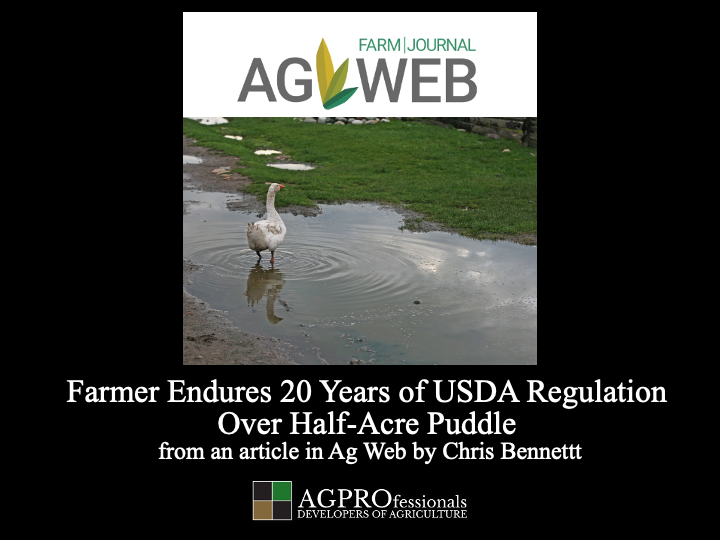How did a farmer’s half-acre puddle become the government’s wetland? By science or decree?
In the annals of private property ownership versus government regulation, Arlen Foster’s case is standout. His entire agriculture operation hinges on an isolated dot within his South Dakota property—a .8-acre depression seasonally holding up to 8.5” of water. USDA claims the .8-acre spot is a wetland, but Foster counters it is manmade and attributable to snowmelt from an adjacent shelterbelt planted by his father.
If Foster dares drain the eight-tenths of an acre, he faces ruin—the total loss of USDA loans, payment programs, and crop insurance subsidies, as well as a potential requirement to repay benefits previously received.
“I’ve proven the .8-acre is artificial, and not a wetland, but in the bureaucracy’s looped, in-house system, the courts only rely on what the government reps claim,” Foster says. “Whatever USDA says about wetlands is the only science allowed in the room.”
Link to article: HERE

